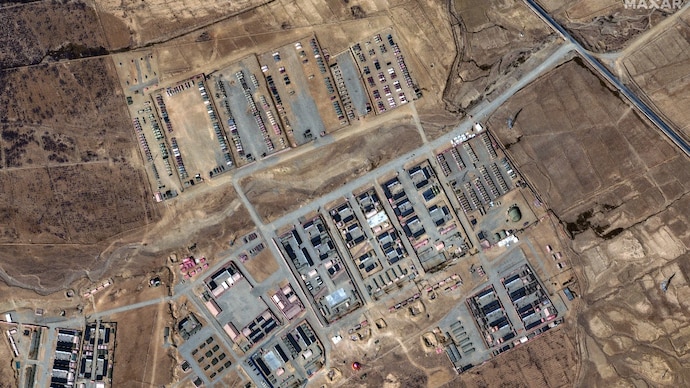
In the midst of simmering tensions along the Indo-Tibetan border, China has shown an augmented military presence near Tawang, a strategic region in Arunachal Pradesh. This comes just a few months after Indian forces successfully thwarted a Chinese incursion in December of the previous year.
Decoding the Border Shift
Commercial satellite imagery sourced by India Today reveals that China has possibly shifted its Combined Arms Brigade (CAB) closer to the site of the previous standoff. Initially located at Lampug in Tsona Dzong during the altercation, the brigade now finds itself at Ritang in Lhontse Dzong.
This change in deployment strategy wasn’t lost on India‘s Defence Minister, Rajnath Singh, who recently visited the border area of Tawang. Accompanied by top military officials, Singh’s presence in the region on the festival of Dussehra, which celebrates the triumph of good over evil, is symbolic of India‘s stance against perceived external threats.
ALSO READ: India Watches Closely as Bhutan and China Discuss Boundary and Diplomatic Ties
As quoted by India Today, Singh addressed the Parliament, saying there were “no fatalities or serious casualties on our side” during the December clash. However, China‘s account differed, omitting any mention of skirmishes.
A Larger Strategy at Play?
Some analysts, like Amrita Jash, Assistant Professor at the Department of Geopolitics and International Relations, emphasized China’s broader goals. Speaking to India Today, she mentioned, “The continuous push towards Arunachal Pradesh is to have its territorial claims secured.” While India legally oversees Arunachal Pradesh, China maintains its territorial claims over the region.
Om Bhole, Senior Research Associate at the Organisation for Research on China and Asia (ORCA), suggests that these developments align with Xi Jinping’s recent policies emphasizing “local wars” and “combat readiness.”
India’s Counter-Measures
In response to China‘s actions, India has fortified its positions along the border. Capitalizing on its vantage points, India has maintained several small outposts to deter potential incursions. Yet, with China enhancing road networks and establishing new garrisons, India‘s long-standing advantages may be at risk.
ALSO READ: China Dismisses its ‘Missing’ Defence Minister Li Shangfu Without Explanation
Beyond military measures, India has also been proactive in non-military initiatives. This includes the “vibrant villages” scheme for infrastructure development near the LAC in Arunachal Pradesh and promoting border tourism, as highlighted by India Today. Such initiatives aim to solidify India’s influence and presence in these border areas.
In Conclusion
The evolving dynamics at the Indo-Tibetan border, underscored by China‘s strategic deployments and India‘s countermeasures, highlight the intricacies of geopolitics in the region. As both nations continue their diplomatic and military dance, the world watches closely, anticipating the next move.






